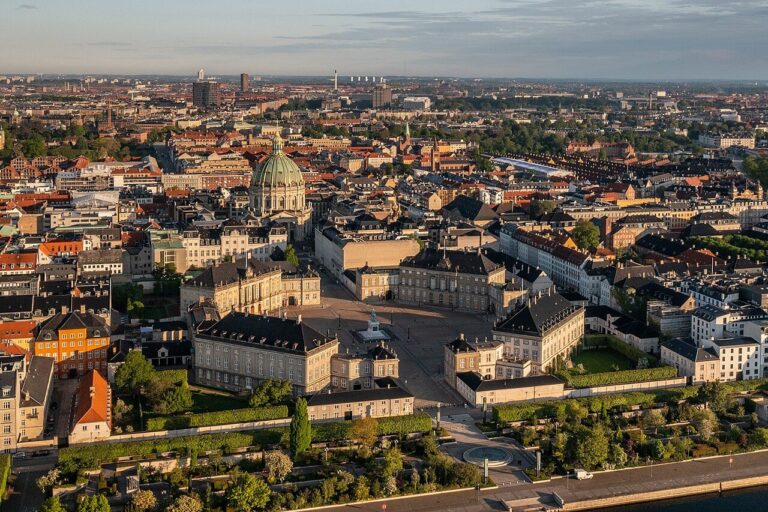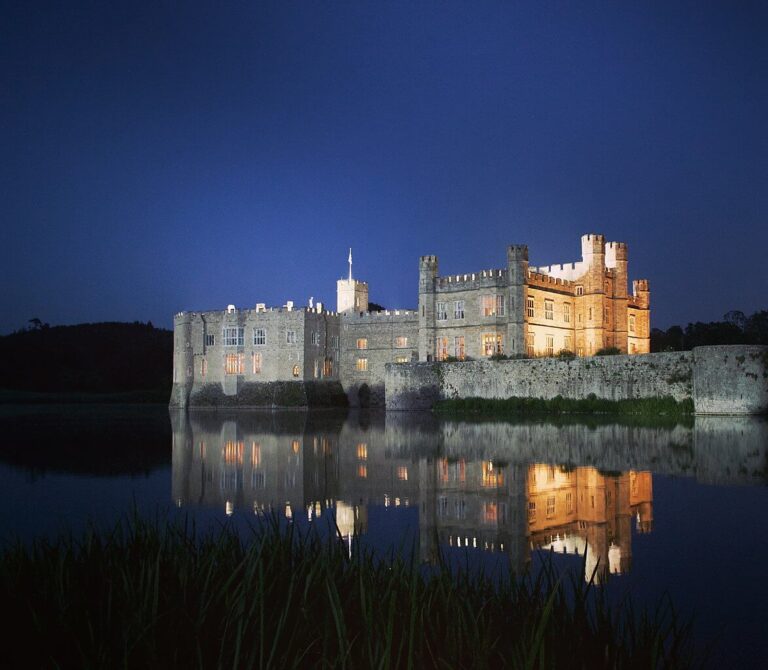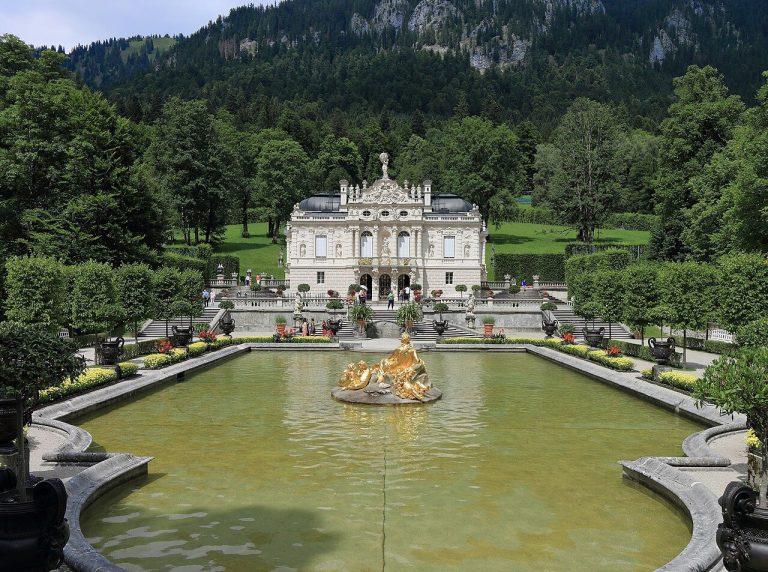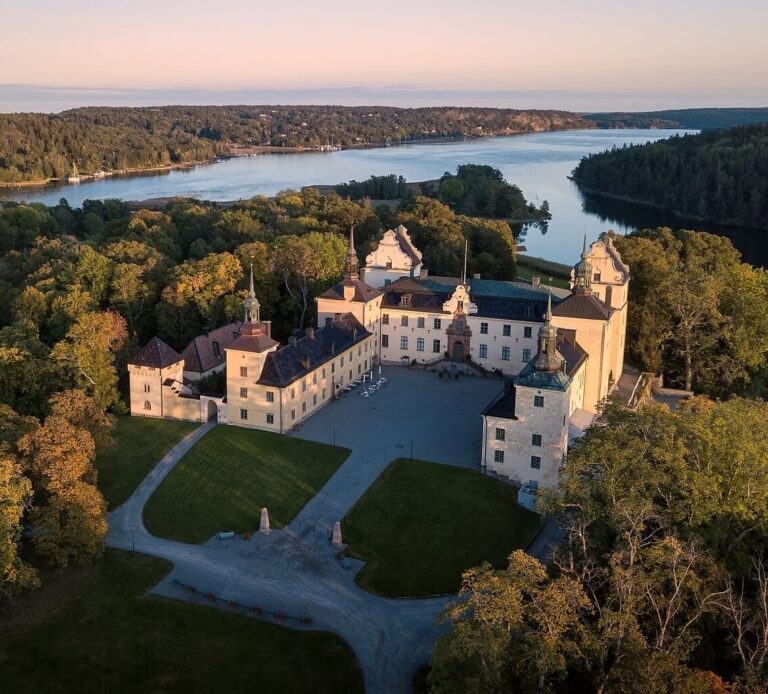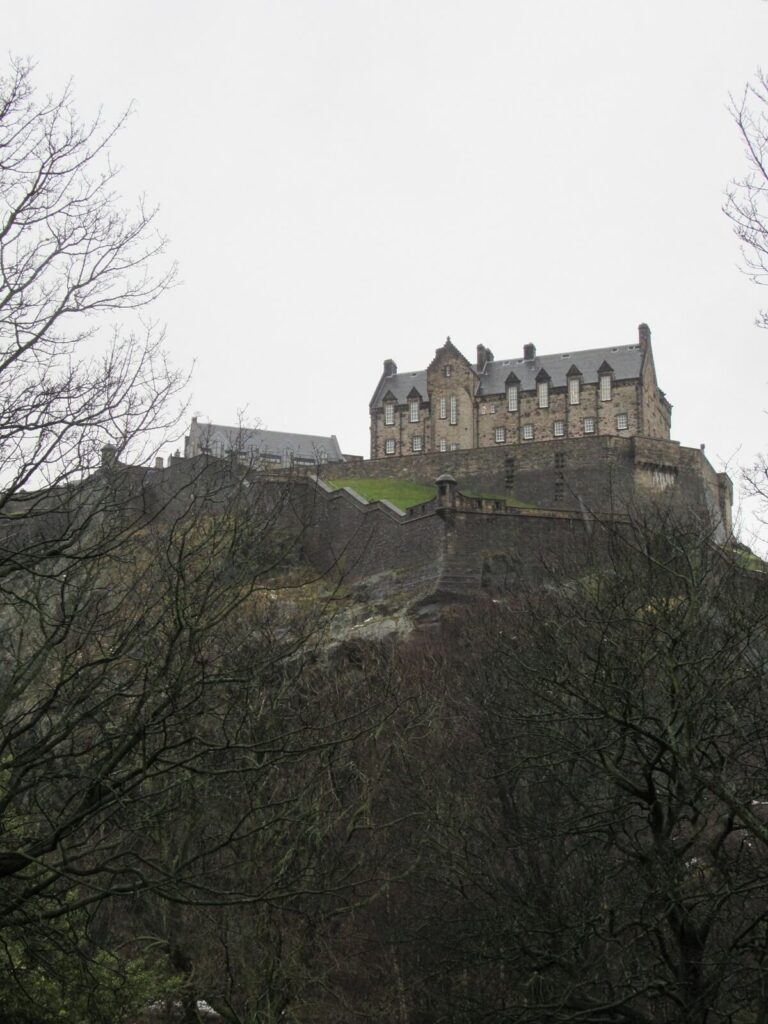31 Beautiful Castles in Denmark (+ Map)
Even though Denmark is small, the Scandinavian country is filled with history, culture, and nature. From the Vikings to famous Kings, Queens, and noblemen, it is no surprise that you can find beautiful castles in Denmark.
There’s a rich variety of Danish castles. From fortifications holding off the Swedes, Germans, and French. To lavish Baroque or Renaissance manors and castles. Many of these historic castles were once owned by the Danish Royal Family, and some are still used as a Royal palaces. And in Denmark, you can also find one of the most famous castles in the world: Kronborg Castle or Elsinore Castle. William Shakespeare used one of these Danish castles as his inspiration for his play Hamlet.
This article shows the best castles in Denmark that you can visit. Whether you’re looking for Copenhagen castles that you can visit on your city trip or if you want to venture out into the Danish countryside, these castles all have a rich history, and they are definitely worth visiting.
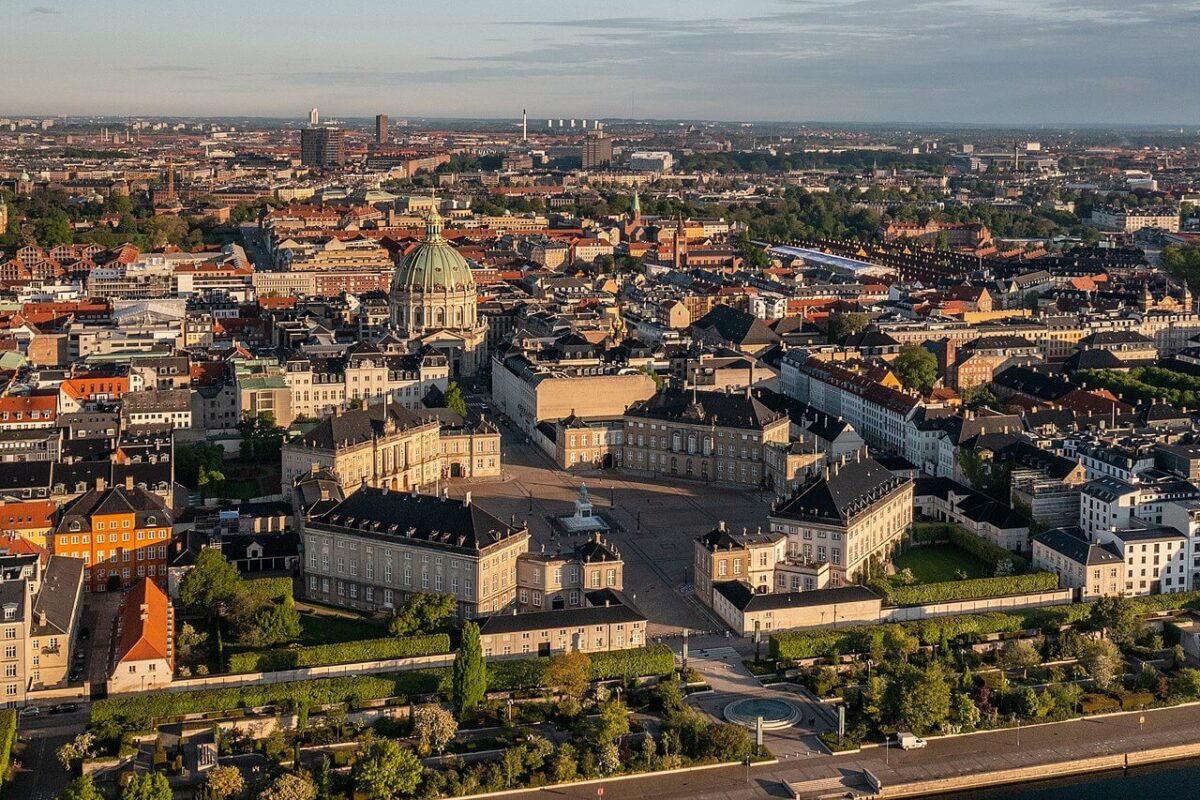
Amalienborg Palace
In central Copenhagen, surrounding Amalienborg Palace Quare, stand four Royal palaces. The palaces were built in the 18th century for four noble families. But when the first Christiansborg Palace burnt down in 1794, the Danish Royal family bought the palaces and moved in.
Two of the four palaces (Christian IX’s Palace and Frederik VIII’s Palace) are now residences of Queen Margrethe, and the Crown Princely pair Fredrik and Mary with their children.
Christian VIII’s Palace houses the Amalienborg museum, where you can learn more about the last 150 years of Royal history. You can visit the private apartments, the Royal Reception Rooms, the Gala Hall, and other State Rooms. These rooms (except the royal apartments) are still used by the Royal family.
The last palace, Christian VII’s Palace, is the Queen’s palace for guests and official receptions.
Behind the palace lies the Amalie Garden. A modern garden with fountains, sculptures, trees, and flowers designed by architect Jean Delogne.
Where: Copenhagen
Built: 18th century
Style: Rococo
Visitor information: only Christian VIII’s Palace with the Amalienborg museum is open to visitors. Visit the website for current opening hours.

Christiansborg Palace
When you think of palaces and castles, you probably think of old historic buildings. But Christiansborg Palace is only 100 years old. However, the Danish Crown has ruled on this site for centuries. Currently. Christiansborg Palace is used as the seat of the Danish parliament (including the Prime Minister’s Office and the Supreme Court of Denmark).
The Danish Royal Family also uses Christiansborg Palace for official events like gala banquets and public audiences. The family uses the Royal Reception Rooms, the Palace Chapel, and the Royal Stables.
Where: Copenhagen
Built: 1907- 1928
Style: Baroque, Neoclassicism, Neo-Baroque
Visitor information: Christiansborg Palace is open to visitors. Visit the website for current opening hours.

Kronborg Castle (Hamlet’s Castle)
Is it Kronborg or Elsinore? It depends on whom you ask. Kronborg Castle is used as the setting of William Shakespeare’s Hamlet. He used the English name of Helsingør (where the castle is located) as the name for Elsinore Castle. The Danish castle is a UNESCO World Heritage Site and is considered one of the most important Renaissance castles in Scandinavia.
The castle was built in a strategic location between Denmark and Sweden. During its most important years, the castle was adorned with spires, sandstone, and copper roofs thanks to the “Sound Dues” which sailors had to pay to pass the castle.
Between 1658 and 1660, Kronborg Castle was occupied (and plundered) by Karl Gustav, King of Sweden. After that, the castle was no longer used as a residence.
Where: Helsingør
Built: 1420s
Style: Renaissance
Visitor information: the castle is open to visitors. Visit the website for current opening hours.
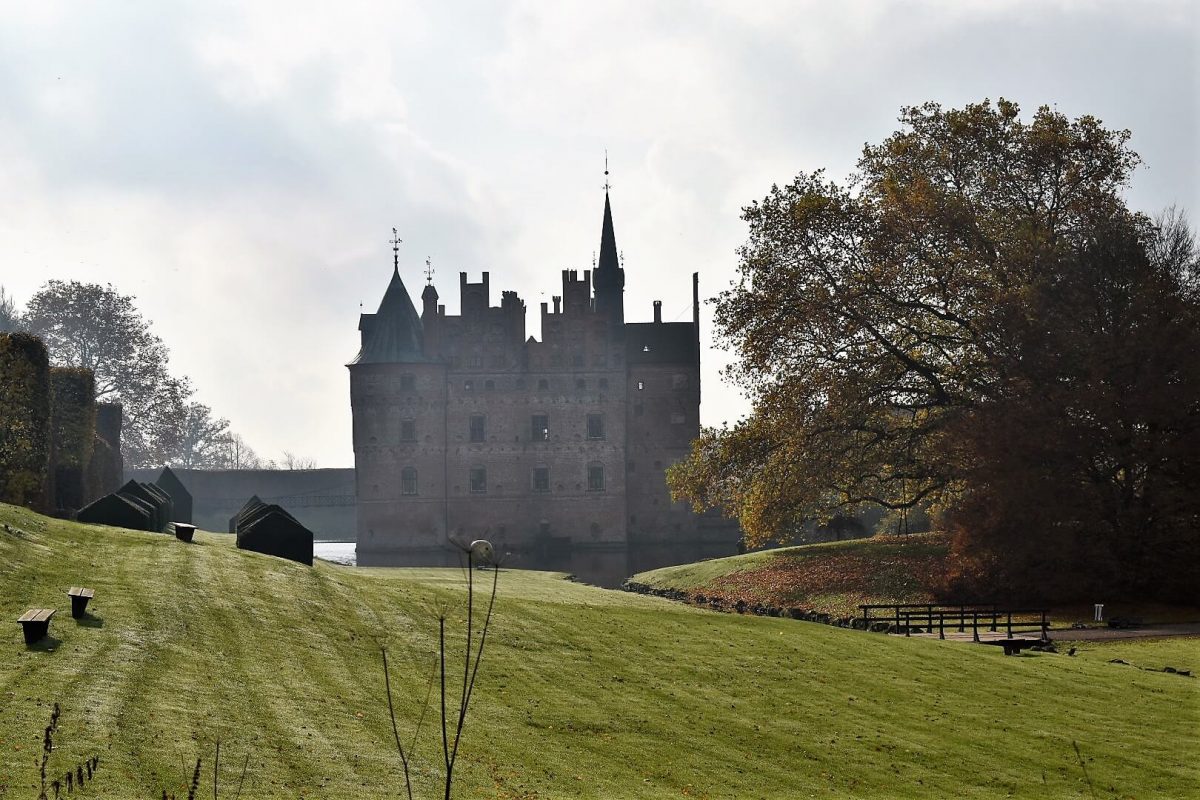
Egeskov Castle
Egeskov Castle is the best-preserved Renaissance water castle in Europe. The castle was built in 1554 by Frands Brockenhuus, who wanted to build a fortified home to protect his family against civil unrest.
The castle has been owned by several noble Danish families. Currently, it is owned by the Bille family, who has opened up the castle for visitors. Surrounding the castle are several gardens, including a Renaissance garden, an English garden, and a Fuchsia garden.
Where: Kværndrup
Built: 1554
Style: Renaissance and Gothic
Visitor information: the castle and gardens are open to visitors. The estate also houses a vintage automobile museum and a motorcycle museum. Visit the website for current opening hours.

Skjoldemose Manor
Skjoldemose Manor is a historic house on the island Funen whose history goes back six hundred years. The current manor was built by Otto Krag, who was a member of the royal council of King Frederik III.
Skjoldemose is one of the oldest manor houses in Denmark and one of the country’s few late Renaissance buildings. Since the early 20th century, the Ulitch family has owned the manor. The manor is located in beautiful hilly terrain between Stenstrup and Vester Skerninge.
The manor, Skjoldemose Gods, is the only manor in Denmark where your group can experience the home visit of a private estate and farm and learn how to bake traditional danish butter cookies. But the grounds and surroundings have more to offer. Visit the garden that may have inspired Hans Christian Andersen’s fairy tale “Thumbelina”, explore South Funen’s lovely nature, or visit the nearby adventure trail in the Old Woods, which is great for children
Skjoldemose Manor visitor information: a visit to the manor has to be pre-booked. Visit the website for more information.
Address: Rødmevej 45, 5771 Stenstrup, Denmark
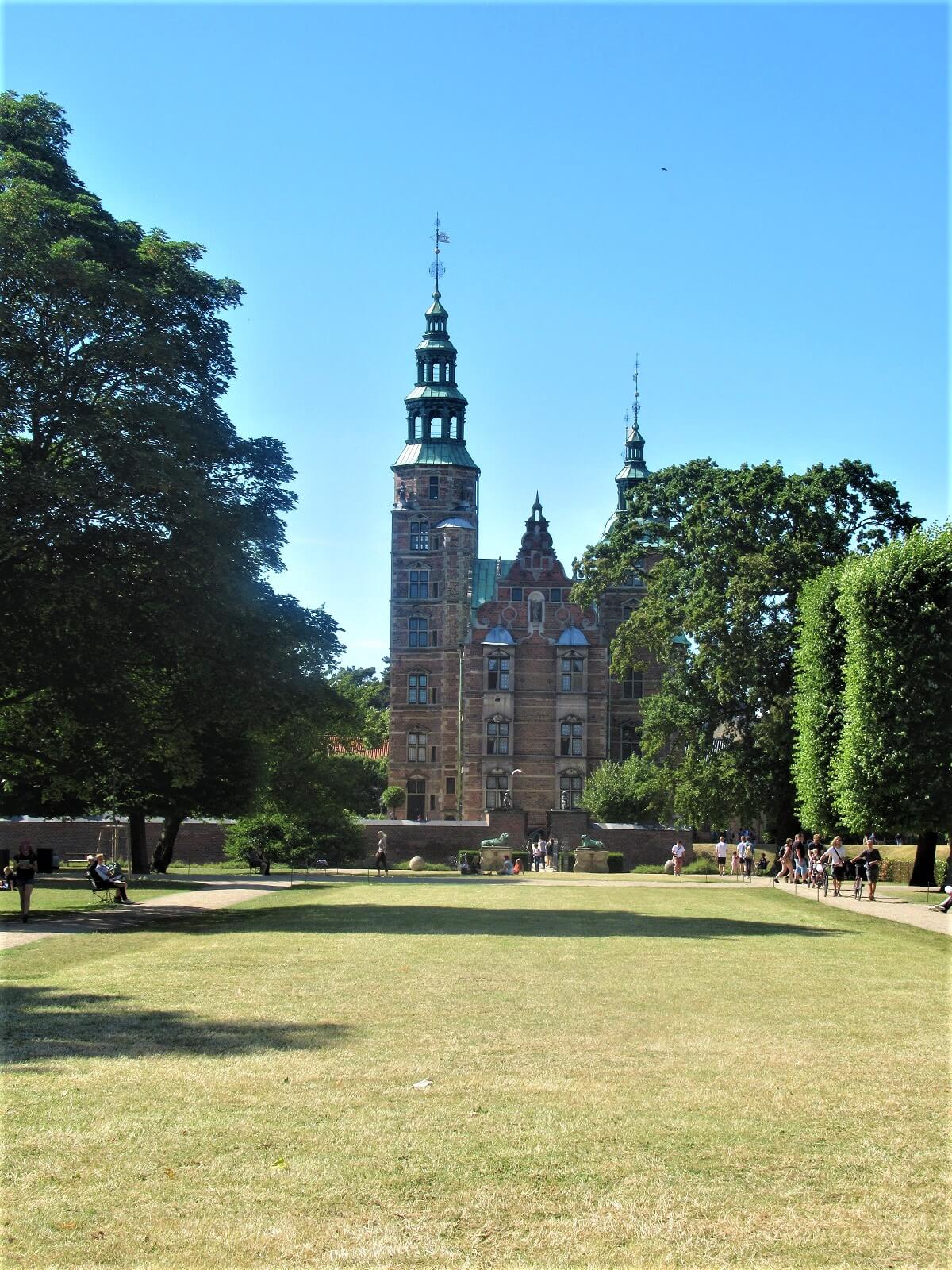
Rosenborg Castle
Rosenborg Castle is a Renaissance castle in the center of Copenhagen. The castle’s history goes back 400 years, when it was built as a summer palace by King Christian IV. All these years, the castle has been the home of the Danish treasury.
Surrounding the castle lies the King’s Garden, the oldest Royal garden in Denmark. This Rosenborg Castle Garden is now a favorite meeting place for people living in Copenhagen and its visitors.
Where: Copenhagen
Built: 1606
Style: Renaissance
Visitor information: you can visit the Danish treasury, the Knight’s Hall, and the King’s private spaces. Visit the website for current opening hours.

Frederiksborg Castle
Frederiksborg Castle is the largest Renaissance castle in Scandinavia. The castle was built in the 17th century by King Christian IV, the King of Denmark and Norway.
In 1859, a fire broke out that badly damaged the castle’s interiors. After the fire, the Danish Royal House decided not to use the castle anymore.
Thanks to the public and J.C. Jacobsen (founder of Carlsberg), the castle was completely restored and reopened as the Danish Museum of National History.
The museum shows 500 years of Danish history with a large collection of portraits, history paintings, furniture, and applied art.
On the estate, you’ll also find the Fredriksborg Castle Chapel, which wasn’t damaged during the fire. The Chapel has a gold, silver, and ebony altarpiece and a historic Compenius organ built by Esajas Compenius in 1610.
Where: Hillerød
Built: 1620
Style: Renaissance
Visitor information: visit the museum website for current opening hours.

The Hermitage Palace
The Hermitage is King Christian VI’s hunting lodge just outside Copenhagen. The royal hunting lodge was built in the 1730s and it’s now surrounded by a UNESCO heritage landscape.
The Hermitage was built so King Christian VI could rest and dine in a private manner with his guests. A unique feature in The Hermitage was the dining table that could rise up from the floor into the dining hall. This way, no servants were needed to bring plates, and there was more privacy for the King and his guests.
The Hermitage is still used by the Royal family as a hunting lodge. The grandest room is the dining hall, richly decorated in marble, plaster, mirrors, and marbled wood. The rising table is no longer in the palace.
Where: Dyrehaven
Built: 1730s
Style: Baroque
Visitor information: the Hermitage can be visited through a guided tour. Visit the website for more information.

Frederiksberg Palace
Sitting atop Frederiksberg Hill in Copenhagen stands a 17th-century palace with the same name. Frederiksberg Palace was built by King Frederik IV who got inspired by Italian architecture during his travels through Europe.
The king used Frederiksberg Palace as a summer residence, but the later King Christian VI lived her permanently until Christiansborg Palace was completed. In the 19th century, the Royal Danish Army Officers Academy moved into the palace.
Surrounding the palace are two romantic gardens: The Palace Garden and Søndermarken. The gardens have canals, lakes, and a Chinese Pavilion.
Where: Copenhagen
Built: 1699-1735
Style: Baroque
Visitor information: the palace can be visited through a guided tour on the last Saturday of the month. The Palace gardens are open daily. Visit the website for more information.

Rosenholm Castle
Rosenholm Castle is the oldest family-owned castle in Denmark. The castle, located northeast of Aarhus, is also one of the best-preserved buildings from the golden age of the manor house that lasted from 1550 to 1630.
The estate’s history goes back to the 14th century when it was owned by the Catholic Church. Since the 16th century, the manor became the property of one of the oldest families in Denmark: the Rosenkrantz family. The importance of their family is also visible in literature, as William Shakespeare used Rosenkrantz as one of his surnames in Hamlet.
The current castle was founded in 1559. The Italian-inspired manor used to have an open loggia, but it was later extended, and in 1607, the building had its present four wings, inspired by the Italian Renaissance.
The interiors of the castle were remodeled in the 1740s in Baroque style. The surrounding garden is also laid out in Baroque style.
Where: Hornslet
Built: 1559
Style: Italian Renaissance
Visitor information: the castle can be visited by guided tour. Visit the website for more information.

Gråsten Palace
Gråsten Palace is the Summer residence of the Danish Royal family. The estate on which the white palace stands in the Jutland region has been owned by several noble Danish families since the 16th century. In the early 20th century, the state took ownership of the palace. The palace was restored until it was given to the later King Fredrik IX and Queen Ingrid. Queen Ingrid lived in and loved Gråsten Palace until her death in 2000.
The only 17th-century building on the estate that survived is The Palace Chapel. At that time, a Baroque palace built by Count Fredrik Ahlefeldt stood there. The chapel has a grand altarpiece and approx. 80 paintings. The gardens at Gråsten are in English style with roses and perennials.
Where: Gråsten
Built: 1759
Visitor information: the palace gardens and chapel are open to visitors when Queen Margrethe II is not in residence. Visit the website for more information.
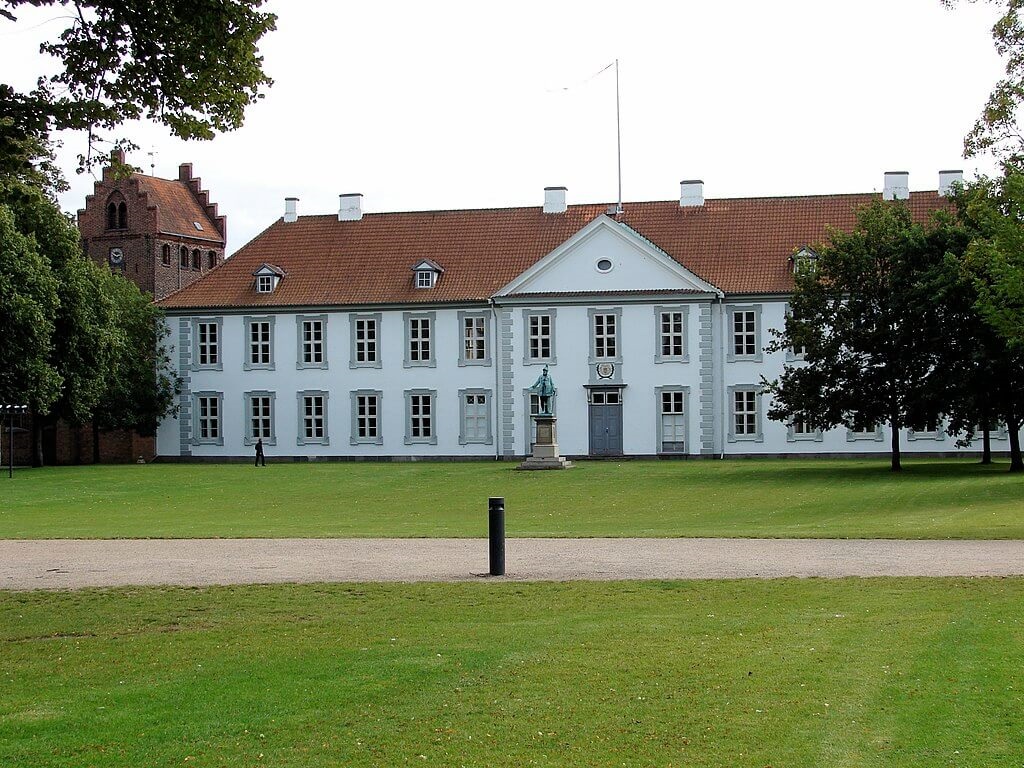
Odense Castle
Odense Castle is a Baroque palace located in the city center of Odense. The castle is built on the site of a former monastery, but since 1536 the castle is owned by the Royal family. In c, a new palace, designed by J.C. Krieger, was constructed for King Frederick IV.
Odense’s most famous resident, Hans Christian Anderson, is also connected to the castle. His mother worked at Odense Castle and in his childhood, he visited the castle and played with the future King Frederick VII.
Where: Odense
Built: 1723
Style: Baroque
Visitor information: the castle is used by the Odense City Council and can not be visited. The Royal Gardens are open to visitors.
See also: Castles and Manor Houses on Funen in Denmark
Hammershus Castle
Hammershus Castle is a medieval fortification on the island of Bornholm. Hammershus was the largest fortification in Scandinavia and one of the largest in Northern Europe. The castle was built in the 13th century with a base castle residence and a grand tower. Around the castle grounds stood a 750-meter-long (2,460 ft) perimeter wall.
The castle saw several struggles, between the Kings of Denmark and the Archbishops but also attacks by Swedish forces. In 1743, the fortification was abandoned and the castle ruins are now a popular tourist destination. From the ruined castle you have gorgeous views of the coastline and the sea surrounding Bornholm.
Where: Allinge
Built: 13th century
Dragsholm Castle
Dragsholm Castle is a Baroque castle on the island of Zealand. There has been a building on this site for more than 800 years and it is one of the oldest secular buildings in Denmark.
The castle was confiscated by the Crown during the Reformation. It was then used as a prisoner for noble and ecclesiastical prisoners. Famous prisoners at the castle were the last Catholic Bishop in Roskilde and the third husband of Mary, Queen of Scots.
In 1694, Frederik Christian Adeler transformed the castle into the Baroque buildng we see today. The interiors have been modernizes though you can still see traces of the Late Romantic Style that was added after the First World War. Today, Dragsholm Castle is a hotel.

Marselisborg Palace
In 1897, a proposal was made to gift Prince Christian (later King Christian X) and Princess Alexandrine a summerhouse in Jutland. The Aarhus city council offered parts of the Marselisborg land for the new summer residence of the couple. The palace was a “gift from the people,” which meant that the funding for the new palace came from individual donations from the Danish people.
The palace was built between 1899-1902 and has an English-style garden. Marselisborg is currently the summer residence of Queen Margrethe II.
Where: Aarhus
Built: 1899-1902
Style: Neoclassical
Visitor information: the palace is not open to visitors, but the Palace Gardens are open when the family is not in residence.
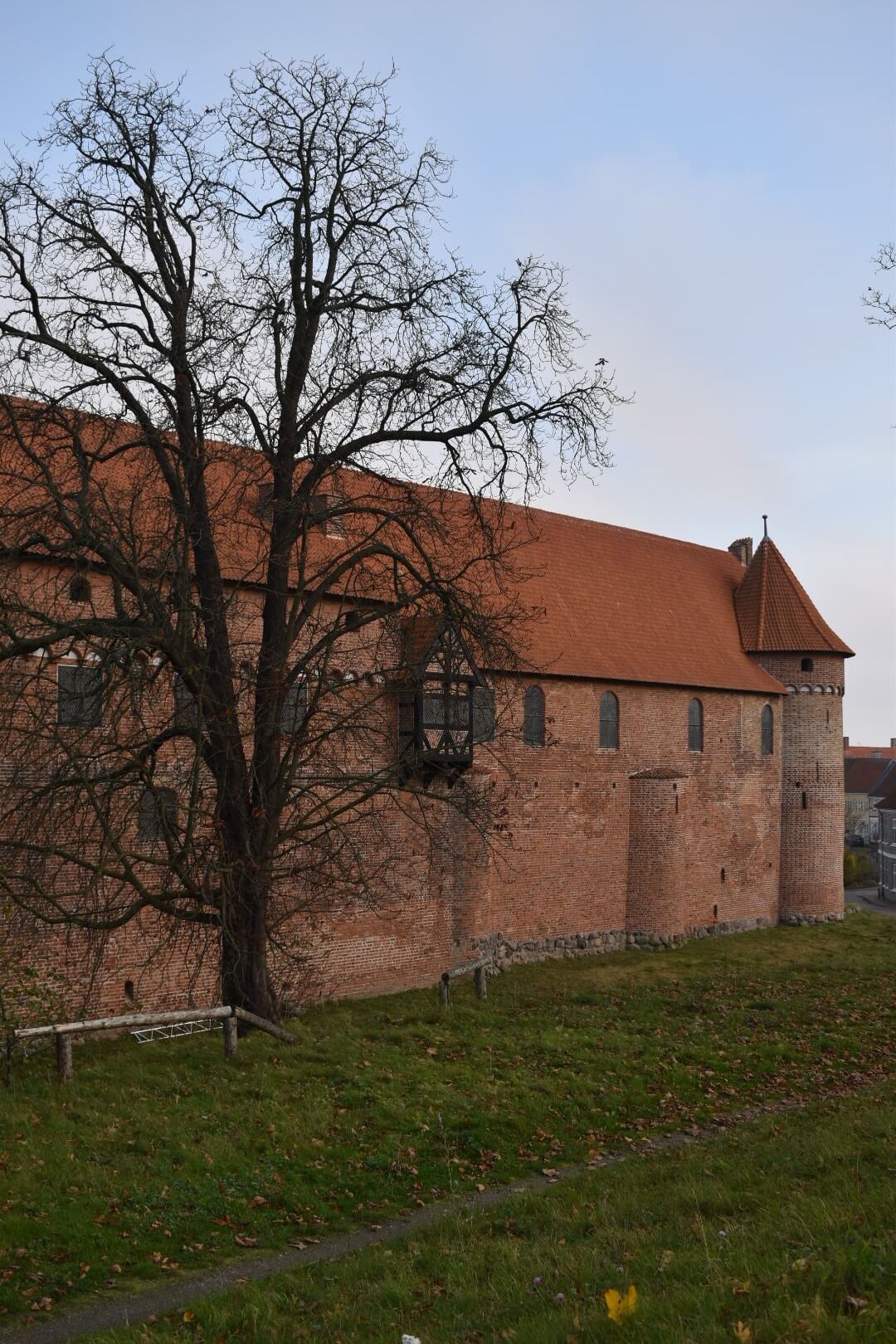
Nyborg Castle
Nyborg Castle is a medieval castle that played an important part in Danish history. In 1282, King Eric V Kipping signed the first constitution of Denmark in Nyborg Castle.
The castle was severely damaged during the Dano-Swedish War in 1657-58. Most of the castle was torn down after this conflict and the stones were used to build Odense Palace. Today, only the castle’s holding grain and gunpowder are still visible. The castle is now a museum.
Where: Nyborg
Built: 1170s
Visitor information: the castle is currently being restored. It will reopen in 2023. Visit the website for more information.

Fredensborg Palace
Fredensborg Palace is the Spring and Autumn residence of the Danish Royal family. The was built in 1719 as a hunting palace for King Frederik IV. Over the years, the palace has undergone several extensions. King Christian IX and Queen Louise used the palace for longer periods. Their daughters and sons-in-law represented Royal families all over Europe. At Fredensborg Palace, they all came together.
The palace is not only used as a Spring/Autumn residence but also for official events. The most notable event in recent years was the wedding of Crown Prince Fredrik and Crown Princess Mary. During state visits, the heads of state scratch their name on a pane of glass with a diamond.
The gardens at Fredensborg house a large collection of sculptures. Most of these sculptures are by the Nordic neo-classical sculptor J. Wiedewelt. The gardens also house 68 sandstone figures (carved by J.G. Grund) of Norwegian and Faroese farmers and fishermen.
Where: Fredensborg
Built: 1719
Style: Dutch Baroque
Visitor information: the palace and private garden are open in July by guided tour in English or Danish. The palace gardens, the Baroque gardens, and the Valley of the Norsemen are open all year round. Visit the website for more information.

Koldinghus Castle
For centuries, Koldinghus was the most important Royal castle in Denmark. Koldinghus was founded in the 13th century, and over the years, it has been a fortress, a royal residence, and a museum.
Today, the castle is a modern museum with a collection of furniture dating from the 16th century to the present day, Roman and Gothic church culture, and older Danish paintings. The castle also hosts international exhibitions.
Where: Kolding
Built: 15th century
Visitor information: Visit the website for current opening hours.

Holckenhavn Castle
Holckenhavn Castle is a 16th century manor house that was built over three generations in the 16th and 17th century. In 1672, the manor house was bought by Eiler Holck, who founded the Barony of Holckenhavn. His family still owns the castle to this day. The castle is currently an event venue but the 12 hectare park is open to visitors.
Where: Nyborg
Built: 1590
Style: Renaissance

Valdemars Castle
Valdemars Castle is a large 17th-century manor house designed by Hans van Steenwinckel (who also designed Kronborg and Fredriksborg). The manor was commissioned by King Christian IV, and it was meant to be the home of his son Valdemar Christian. Unfortunately, Valdemar Christian never lived in the house as he was killed in battle in 1656.
The manor was gifted to naval hero Niels Juel after his victory over Sweden. Today, the Juel family still lives at Valdermars Castle.
Where: Svendborg
Built: 1639-1644
Style: Dutch Renaissance style
Visitor information: Valdermars Castle is open to the public. On the estate is also a hunting museum. Visit the website for opening hours.

Schackenborg Castle
Schackenborg Castle is a Baroque chateau-style manor that was owned by the Schack family for 300 years. After the Schack family, the castle became the property of the Danish Royal family. Since 1993, the castle has been the residence of Prince Joachim. He lived here until 2014 with his first wife, Alexandra, and later with his second wife Marie.
Where: Tønder
Built: 1661
Style: Baroque chateau
Visitor information: the castle and gardens can be visited through a guided tour. The castle also houses a restaurant and rental apartments. Visit the website for more information.

Tranekær Castle
Tranekær Castle is the oldest lived-in building in Denmark. The history of the castle date back to the 12th century when it was built for King Valdemar.
In the 17th century, the castle was given to Christian Rantzau, and his descendants live in the castle today. In the 19th century, the castle was renovated, and its current appearance dates from this period. The English red color was added in the 20th century.
Where: Tranekær
Built: 12th century
Style: Renaissance
Visitor information: the castle is open for guided tours on specific days in the summer months. Visit the website for more information.

Sønderborg Castle
The history of Sønderborg Castle with Valdemar the Great, who built a fortified tower. From 1350 onwards, the castle was expanded, and eventually, it turned into the country’s strongest fortress.
Sønderborg Castle is famous for being the castle where King Christian II was held prisoner of state for seventeen years. In the mid-16th century, King Christian III converted the castle into a four-wing building. In the 18th century, the castle was rebuilt in the Baroque style.
Since the 20th century, the castle has been a museum. The museum shows exhibitions on the turbulent history of Southern Jutland and the border country, the imprisonment of King Christian II, the Danish defeat in 1864, and the many Danes who participated (for the Germans) in World War I prior to the Reunification in 1920.
Where: Sønderborg
Built: 1158
Style: Renaissance/Baroque
Visitor information: Visit the website for current opening hours.

Voergaard Castle
Voergaard Castle is a Renaissance castle on the North Jutland peninsula. In the 16th century, the castle was owned by Ingeborg Skeel, who expanded the castle to Renaissance style. Ingeborg was a highly skilled businesswoman with an infamous reputation for greed and cruelty.
The castle later changed hands several times, including Erik Scavenius, who was the Prime Minister during the Second World War.
Today, the castle is a museum telling the history of the house and exhibiting the largest private art collection in Denmark.
Where: Dronninglund
Built: 1520
Style: Renaissance
Visitor information: the castle is open to visitors. Visit the website for current opening hours

Jægerspris Castle
Since the 13th century, Jægerspris Castle has been an estate owned by the Crown. King Frederik IV used Jægerspris as a summer residence, but in 1703, he gifted the castle to his younger brother Prince Charles of Denmark. Prince Charles completely renovated the castle.
In the mid 19th century King Frederick VII acquired the castle for him and his wife Countess Danner. The marriage between the King and Louise Danner caused quite a stir. She was an illegitimate child, a ballet dancer, and (before she was his wife) the mistress of (the then) Prince Frederick. Jægerspris Castle became their private retreat, away from social life. After the King’s death, Louise stayed here and opened the house as a historic house museum.
Countess Danner founded the Frederick VII’s Foundation for Poor Women from the Working Class. At the castle, you can also view an exhibition about the orphanage that was founded at the castle.
Where: Jægerspris
Built: 13th century (renovation in 1722)
Style: Baroque
Visitor information: the museum is open Tuesday-Sunday. Visit the website for more information.
Vordingborg Castle
Vordingborg Castle is a ruined castle that was originally built by King Valdemar I as a defensive fortress and as a base to launch raids against the German coast. King Valdemar II created the reformed legal system, the Code of Jutland, at the castle. By the time of Valdemar IV, the castle has nine towers and an 800 meters long defensive wall.
Large parts of the castle were demolished after the Swedish Wars. It was meant as a residence for Prince George (son of King Frederick III), but he never lived there. The only parts of the castle that remain are the Goose Tower and parts of the 14th-century ring wall.
Next to the castle are a botanical garden and a museum.

Roskilde Royal Mansion
Roskilde Palace was commissioned by King Christian VI and used by the Royal family when they traveled through Roskilde or visited Roskilde Cathedral.
During the English siege of Copenhagen, Roskilde Mansion became the headquarters of General Wellesley (who would later become the Duke of Wellington). Today, Roskilde Mansion is a Museum of Contemporary Art.
Where: Roskilde
Built: 1733-1736
Style: Baroque
Visitor information: Visit the website for current opening hours.

Clausholm Castle
Clausholm Castle is one of the finest Baroque castles in Denmark. The castle was built in the 1690s by the Grand Chancellor Count Conrad Reventlow. The castle has been restored multiple times but always with care to the original architecture. This means you can now visit an authentic Baroque castle with many original features.
Where: Hadsten
Built: 1690s
Style: Baroque
Visitor information: the castle and gardens are open to visitors in the summer.
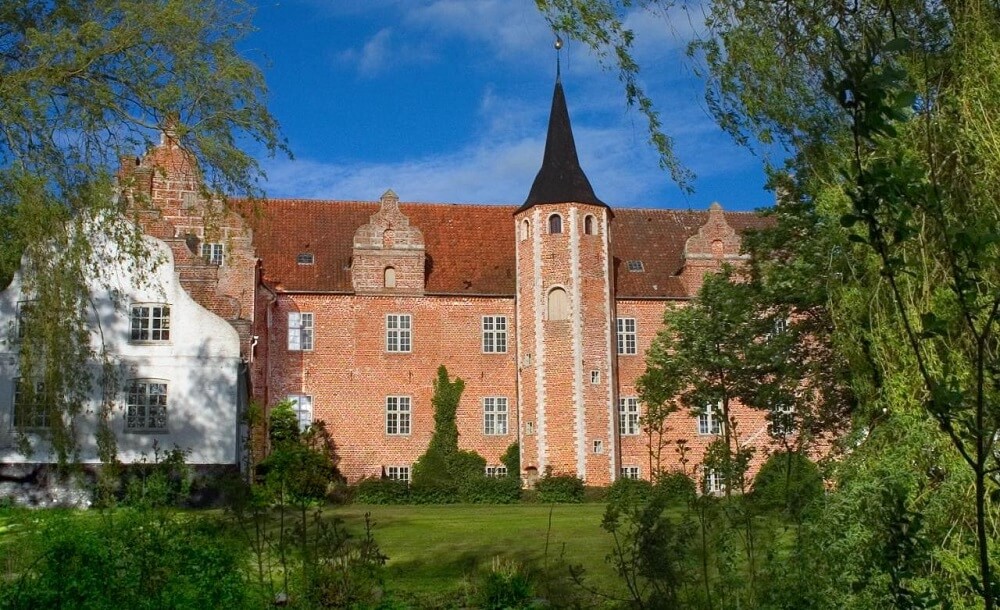
Harridslevgaard Castle
According to legend, Harridslevgaard Castle was a pirate castle. The castle is first mentioned in 1231 but the castle you see today was built in 1606 in the Renaissance style.
The Knights Hall in the castle spans 400m2 and is the biggest in private ownership. Harridslevgaard also has a Medieval cellar. Surrounding the castle, you will find castles with peacocks.
Where: Bogense
Built: 1606
Style: Renaissance
Visitor information: the castle is open to visitors on specific days. Visit the website for current opening days. You can also stay in the castle, a holiday apartment can be booked through booking.com

Sanderumgaard
Sanderumgaard is a manor house in Odense that is best known for its Romantic Gardens. The house is first mentioned in 1468, but the main building dates from 1870 after a design by architect Hans J. Holm.
The Romantic Gardens are one of the first of their kind in Denmark. In the 18th century, the manor was bought by John Bülow, who had been introduced to English garden design after working with Johan Ludvig Mansa.
John was an amateur gardener, but her working on the Romantic garden until his death. And his work paid off as it is one of the finest Romantic gardens in Denmark.
Where: Odense
Built: 1870
Visitor information: the gardens are open all year round, but they can best be visited in the Spring and Summer months.
Glorup Manor
Glorup Manor is one of the finest Baroque houses in Denmark. The house was built in 1765 after a design by Nicolas Henri-Jardis and Christian Josef Suber. On the estate, you’ll also find a 19th-century Neo-Gothic chapel. Surrounding the house is a French Baroque Garden and an Anglo-Chinese landscape garden.
Where: Ørbæk
Built: 1765
Style: Baroque
Visitor information: the gardens are open to the public.
